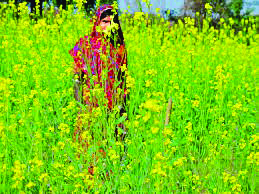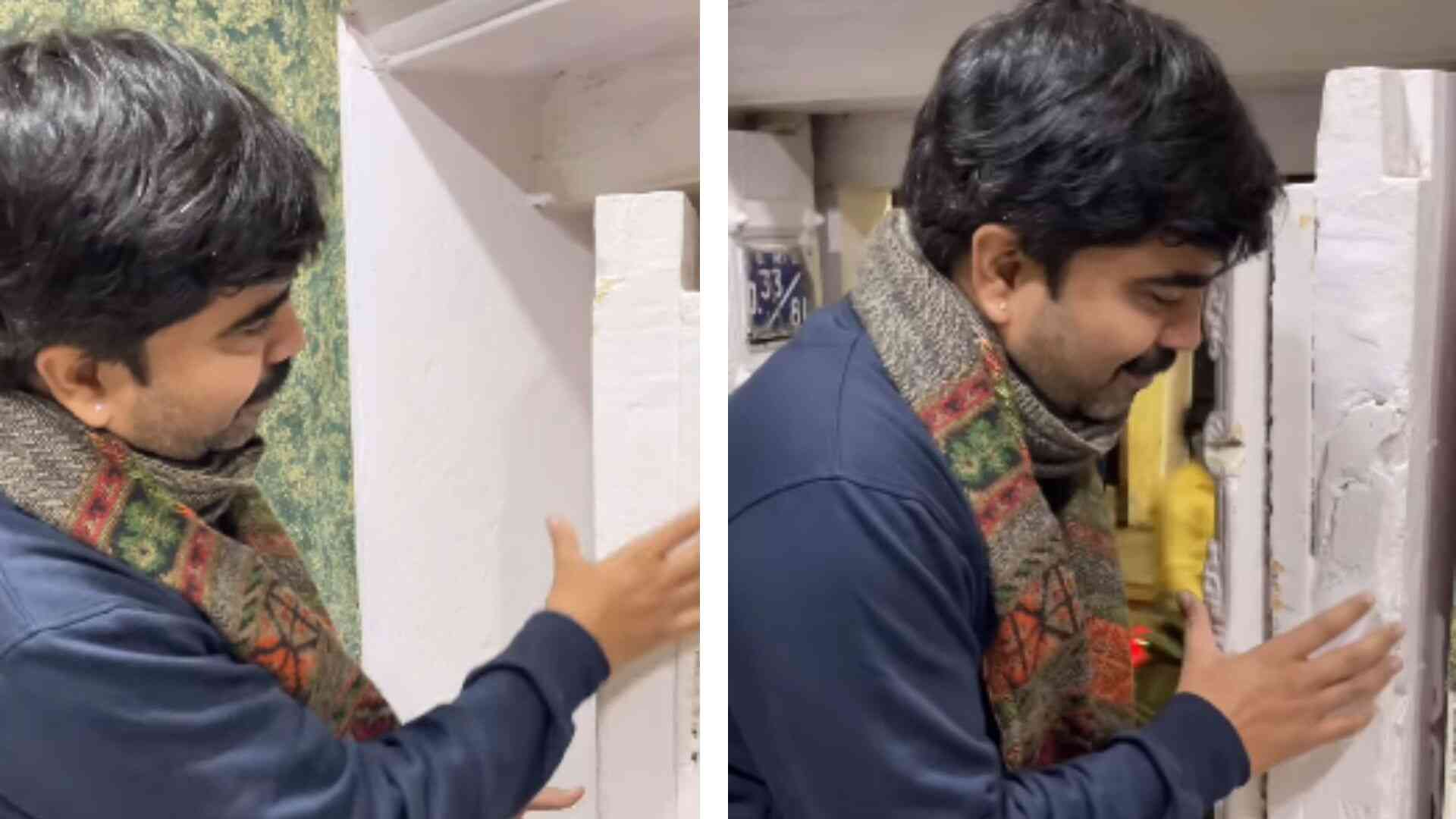
The winter dawn in Rajasthan breaks differently. As the first rays pierce through the morning mist, three generations of the Rathore family gather in their ancestral courtyard in Nagaur. Dadiji (grandmother) Kesari Devi, at 82, carefully examines a handful of black sesame seeds, her weathered fingers separating the chaff with practiced precision. Her daughter in law Kamla tends to dried mustard stalks, while her granddaughter Priya, home from her agricultural studies in Jodhpur, documents these age-old practices on her tablet.
Keepers of the Season
“Winter isn’t just a season here; it’s a teacher,” Kesari Devi muses, her eyes twinkling as she shares wisdom accumulated over eight decades. “Each plant that grows in our winter soil carries stories of survival, nourishment, and community.”
This intergenerational scene playing out in the Rathore household mirrors thousands of similar moments across Rajasthan, where winter plants form the backbone of cultural identity.
The Sacred Trinity is namely Sarson, Til, and Methi
In Rajasthan’s winter landscape, three plants reign supreme, each playing a crucial role in the region’s agricultural and cultural tapestry. Local farmers poetically call them “Maru Pradesh ki Teen Deviyan” (Three Goddesses of the Desert Land).
Sarson (Mustard), The Golden Guardian
The transformation begins in late October when vast tracts of desert land burst into brilliant yellow. “Sarson is our winter gold,” explains Kamla, who manages the family’s five-acre farm. “When I came to this house as a bride thirty years ago, my mother in law taught me how the first mustard harvest of the season always goes to the temple. It’s not superstition; it’s about gratitude.”
Modern agricultural science is now validating what generations of Rajasthani farmers have known: mustard’s deep root system helps prevent soil erosion, a critical factor in the desert ecosystem. The plant’s ability to thrive with minimal water makes it the perfect winter crop for the region’s arid climate.
Til (Sesame), The White Wisdom
As winter deepens, sesame takes center stage. “Each sesame seed contains the desert’s resilience,” Kesari Devi often tells her granddaughter. The family cultivates both white and black varieties, each serving distinct purposes in their winter traditions.
Priya, combining her grandmother’s knowledge with her agricultural education, explains: “What’s fascinating is how our ancestors understood crop complementarity. They knew sesame fixes nitrogen in the soil, making it perfect for rotation with mustard. They didn’t have soil testing labs, but their observation skills were impeccable.”

Methi (Fenugreek), The Green Physician
Fenugreek patches dot the landscape like emerald islands. “Methi is our family doctor,” Kamla says, pointing to their kitchen garden where fenugreek grows abundantly. “Fresh leaves for anemia, seeds for diabetics, dried leaves for year-round use, my mother in law taught me how different parts serve different purposes.”
The Winter Wisdom Network
What makes Rajasthan’s winter cultivation unique is the intricate knowledge network that has preserved these practices.
In the women’s courtyard of the Rathore household, neighboring women gather every few days to process the harvest. This is where
real knowledge transfer happens.
Traditional Processing Methods
The processing of winter plants follows strict traditional protocols, such as mustard being dried on specific cotton sheets that allow proper air circulation, sesame seeds being sun-dried only during certain hours to maintain oil content, and fenugreek leaves being dried in shade to preserve their medicinal properties.
Modern Adaptations
Priya represents the new generation of agricultural stewards. “We’re creating a bridge between traditional knowledge and modern science,” she explains while showing a mobile app she’s developing to document traditional cultivation practices. “For instance, we’ve found that the traditional timing of sesame harvest, which our elders based on lunar cycles, perfectly coincides with optimal oil content in the seeds.”
Beyond Food, The Cultural Ecosystem
These winter plants create an entire cultural ecosystem. Local artisans craft specific tools for harvesting and processing; potters make special storage containers, and traditional medicine practitioners rely on these plants for their winter remedies.
The Festival Connection
Winter festivals in Rajasthan are intimately connected with these plants. The harvest season brings celebrations where community bonds are strengthened through shared work and festivities. “During Makar Sankranti,” Kesari Devi recalls, “we don’t just distribute til gur (sesame-jaggery sweets); we share the year’s first batch of mustard oil with neighbors. It’s about community, not just consumption.”
Innovation
The traditional winter cultivation faces modern challenges. Climate change has altered rainfall patterns, and market pressures favor quick growing hybrid varieties. However, families like the Rathores are adapting while preserving core practices.
The Next Generation
Priya represents a new breed of agricultural entrepreneurs. “We’re exploring value addition,” she explains, showing her latest project, a line of organic winter plant products with QR codes that tell customers the story of each farmer who grew the ingredients. “It’s about making tradition economically viable while preserving its essence.”
Looking Forward, Rooted in Tradition
As another winter day draws to a close in the Rathore household, three generations sit together, sorting the day’s harvest. Modern solar dryers hum in the background while age-old wisdom is passed down through stories and hands-on learning.
“Our winter plants are like our family albums,” Kesari Devi concludes, watching her granddaughter document her traditional seed selection process. “Each seed carries memories of those who cultivated it before us and hopes for those who will continue after us.”
This is Rajasthan’s winter harvest, not just a cultivation cycle but a living legacy where each plant tells a story of resilience, community, and the delicate balance between tradition and progress.
The Economic Renaissance
The story of Rajasthan’s winter plants is increasingly becoming one of economic empowerment. In the neighboring village of Nagaur, Priya’s agricultural startup has inspired other young entrepreneurs to explore new possibilities within traditional farming.
Digital Agriculture Meets Traditional Wisdom
“We’re creating a digital encyclopedia of traditional farming practices,” explains Priya’s colleague, Arjun Shekhawat, who left his IT job in Bangalore to return to his farming roots. “Each farming technique, each processing method, and each traditional storage practice is being documented and validated through scientific research.” Their platform, “Desert Wisdom Digital,” has already attracted attention from agricultural universities across India. The initiative combines drone monitoring of winter crops with traditional knowledge of soil and weather patterns, creating a unique blend of old and new.
Value Chain Innovation
The traditional winter plants are finding new markets through innovative approaches includes Specialty restaurants in metropolitan cities now source specific varieties of mustard and fenugreek directly from traditional farmers. Export markets have opened up for organic sesame, particularly to Japan and European countries. Traditional processing methods are being certified and marketed as premium products, Food processing units run by women’s cooperatives are creating value-added products.
Environmental Stewardship
Climate change has brought new challenges to winter cultivation, but traditional practices offer surprising solutions. Dr. Anita Sharma, a climate scientist studying traditional farming methods, notes, “These winter plants, particularly in their indigenous varieties, show remarkable resilience to climate variations. Their traditional cultivation methods actually help in carbon sequestration.”
Water Conservation Heritage
The traditional methods of winter plant cultivation in Rajasthan represent a sophisticated water management system, such as mustard cultivation techniques that maximize dew collection, sesame varieties that thrive on minimal moisture, traditional mulching practices that retain soil moisture, and indigenous irrigation timing based on plant lifecycle stages.
The Global Connection
As the world grapples with sustainable agriculture, Rajasthan’s winter farming practices are drawing international attention. “What was once considered primitive is now being studied as a model of sustainable agriculture,” observes Dr. James Williams, a visiting agricultural scientist from the University of California, who has been studying Rajasthan’s traditional winter farming methods.
The Rathore family, like many others, now hosts agricultural students from around the world who come to learn about their traditional practices. “It’s a full circle,” Kesari Devi smiles, watching her granddaughter explain traditional seed selection to a group of international students. “Our ancient wisdom is helping shape the future of farming.”
As winter settles over Rajasthan, the cycle continues; seeds are sown, knowledge is shared, and traditions evolve. In the delicate balance between preservation and progress, these winter plants remain not just crops, but carriers of a living, breathing heritage that continues to nourish both body and soul.















